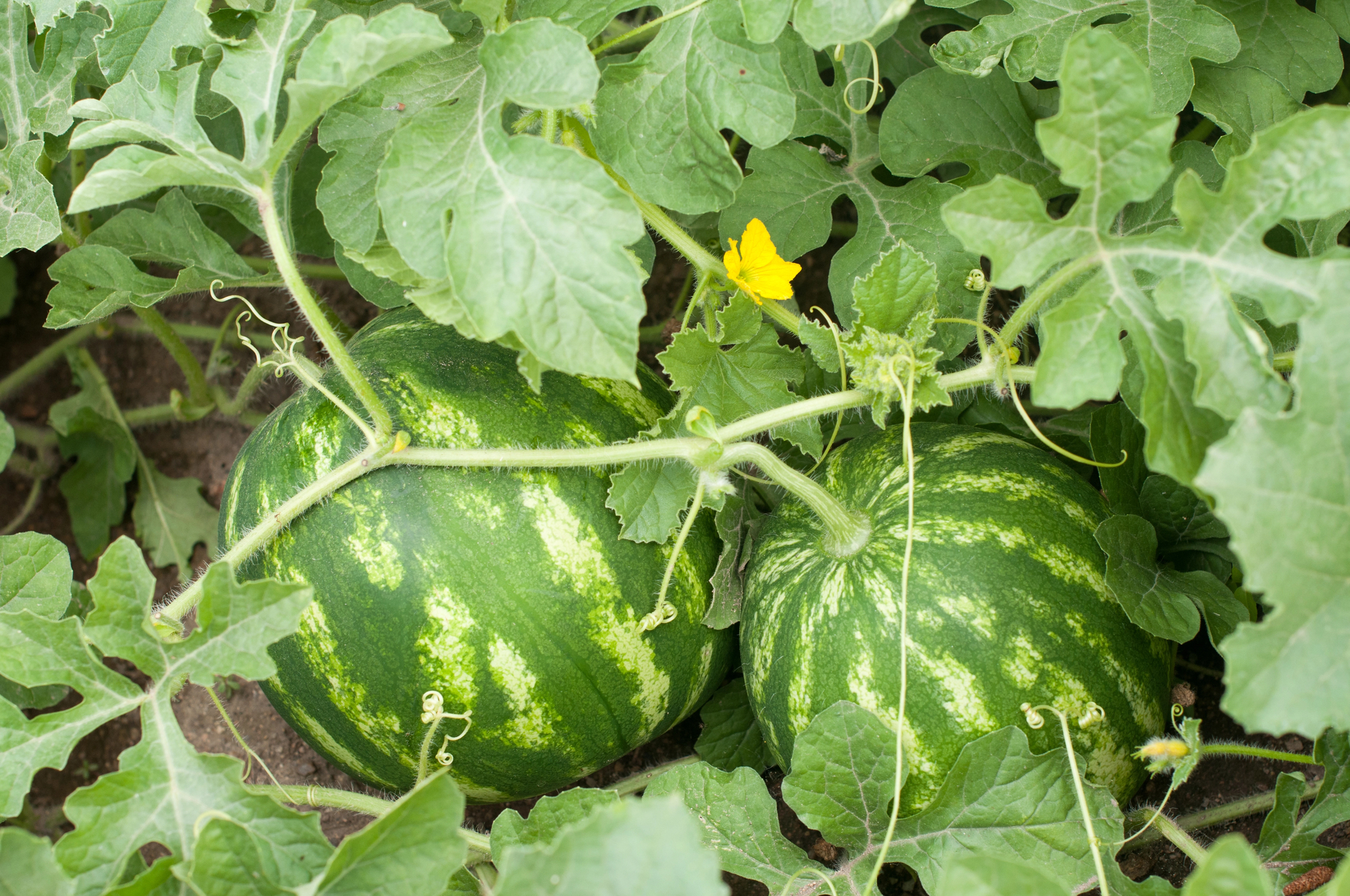Melon Donation Tracker
Quick Links: How & Where to Grow | Temperature | How to Care For | Harvest Signs | Harvesting | Pruning | Pests | Companions | Varieties | Preservation | Recipes | Michigan Tips | Fun Facts
🌱 How & Where to Grow Melons:
- Start indoors 3-4 weeks early – melons need every warm day we can give them!
- Transplant when soil reaches 70°F (early June).
- Space plants 3-4 feet apart in rows 6 feet apart.
- Sunlight: Full sun (8+ hours) essential for sweetness.
- Soil Type: Well-drained, sandy loam ideal, pH 6.0-6.8.
- Soil Amendment: Add compost but avoid excess nitrogen
Melons are the ultimate heat lovers – success in Michigan requires choosing short-season varieties!
🌡️ Temperature Guidance:
Critical 70°F minimum soil. Won’t germinate below 65°F.
- Transplanting: Wait for consistent 70°F soil temperature.
- Growing: Optimal growth at 70-90°F.
- Growth stops below 60°F.
- Cool nights = less sweet melons.
Black plastic mulch can make the difference between success and failure in Michigan!
💧 How to Care for:
- Consistent Moisture: Critical during fruit development.
- Watering: 1-2 inches weekly until ripening, then reduce.
- Mulch: Black plastic mulch essential for soil warmth.
- Fertilizer: Side-dress when vines begin running.
- Support: Place cardboard or straw under developing melons.
📏 Harvest Signs:
Cantaloupe: full slip, strong aroma. Watermelon: brown tendril, yellow ground spot.
- Each melon type has unique ripeness indicators – learn your variety!
- Cantaloupe: Stems slip off easily when lifted, sweet aroma.
- Watermelon: Tendril nearest fruit browns, deep hollow thump.
- Honeydew: Creamy yellow color, slight give at blossom end.
- Don’t harvest too early – melons don’t ripen after picking!
The “thump test” for watermelons really works – ripe ones sound hollow!
🧺 Harvesting:
Handle gently. Harvest in morning. Use immediately for best flavor.
- Always support melon’s weight when checking ripeness.
- Cut watermelon stems – don’t pull from vine.
- Cantaloupe should slip easily – if you have to tug, wait.
- Morning harvest when sugars are highest.
- Handle carefully – bruising affects storage.
✂️ Pruning:
Limit melons per vine. Pinch tips. Remove misshapen fruits.
- Cantaloupe: Keep 3-4 fruits per vine for best size.
- Watermelon: Allow only 2-3 per vine for larger fruit.
- Pinch vine tips once desired fruits set.
- Remove misshapen or damaged fruits early.
- Cut side shoots to concentrate energy on main vine.
🪲 Michigan Pests:
Aphids (virus vectors), cucumber beetles, squash bugs.
- Aphids – worse problem as virus spreaders than direct damage.
- Cucumber beetles – major threat, spread bacterial wilt.
- Squash bugs – attack all cucurbits including melons.
- Bacterial wilt – devastating, no cure once infected.
🫱🏽🫲🏼 Companions:
Radishes, nasturtiums, marigolds, corn. Avoid potatoes.
- Radishes deter cucumber beetles when interplanted.
- Nasturtiums act as trap crops for aphids.
- Marigolds repel various melon pests.
- Corn provides light shade in hottest weather.
- Avoid potatoes and other heavy feeders nearby.
🍈 Varieties:
Cantaloupe: ‘Minnesota Midget’, ‘Fastbreak’. Watermelon: ‘Bush Sugar Baby’.
- ‘Minnesota Midget’ cantaloupe: 60 days, 4-inch fruits, perfect for short seasons.
- ‘Fastbreak’ cantaloupe: 69 days, disease resistant.
- ‘Bush Sugar Baby’ watermelon: 75 days, space-saving bush type.
- ‘Blacktail Mountain’ watermelon: 70 days, developed for cool climates.
- Key: Choose varieties under 85 days!
🫙 Preservation:
Fresh 5-7 days. Freeze changes texture. Pickle cantaloupe.
- Fresh storage: Whole melons 5-7 days room temperature.
- Refrigerate: Cut melons 3-5 days in sealed container.
- Freezing: Cube and freeze but texture becomes mushy.
- Pickling: Unripe melons make great pickles.
- Dehydrating: Makes chewy fruit leather.
- Best enjoyed fresh – preservation options limited.
🧑🏽🍳 Recipes:
Fresh fruit salads, agua fresca, grilled watermelon, melon gazpacho.
- Watermelon feta salad with mint and lime.
- Cantaloupe wrapped with prosciutto appetizers.
- Melon agua fresca – refreshing summer drink.
- Grilled watermelon steaks with balsamic glaze.
- Chilled melon soup with yogurt and herbs.
✋🏼 Michigan Tips:
- Choose <85 day varieties.
- Black plastic mandatory.
- Protected location essential.
- Start transplants indoors May 1.
- Use row covers until flowering.
- South-facing slopes ideal.
- Container growing allows moving to warmest spots.
- Mini varieties more reliable than full-size.
🧠 Fun Facts:
- Cantaloupe named after Italian villa.
- Watermelons 92% water.
- Watermelon is both fruit and vegetable (related to cucumbers).
- Square watermelons grown in Japan using boxes!
- Ancient Egyptians buried watermelons with pharaohs.
- Cantaloupe has more vitamin A than any other melon.
- The world’s heaviest watermelon weighed 350.5 pounds!
- China produces 70% of world’s watermelons.


0 Comments